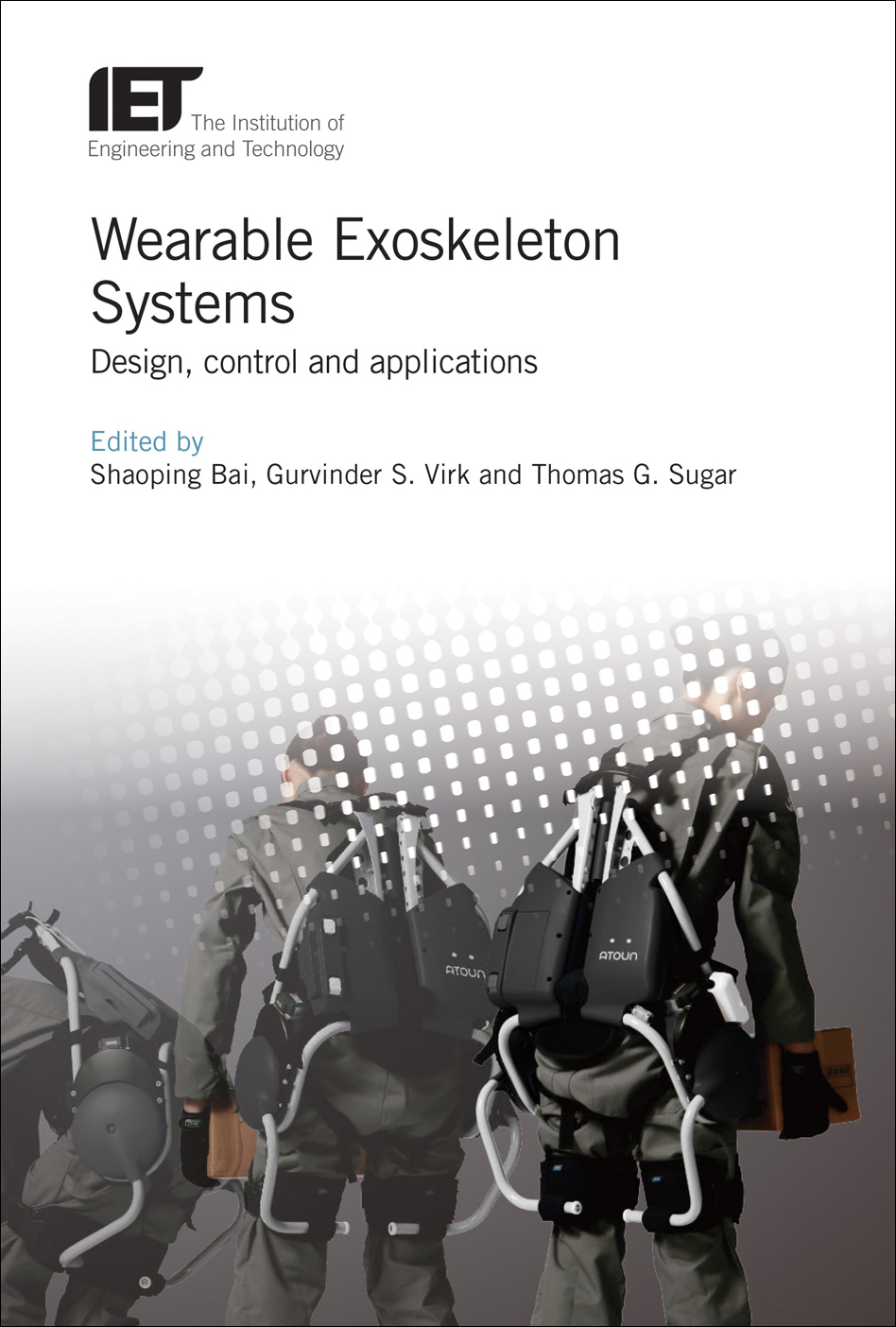- Agricultural Engineering and Technology
- Applied Physics
- Built Environment
- Computing and Networks
- Control, Robotics and Sensors
- Electrical Regulations
- Electromagnetics and Radar
- Energy Engineering
- Healthcare Technologies
- History and Management of Technology
- IET Codes and Guidance
- Manufacturing
- Materials, Circuits and Devices
- Model Forms
- Security
- Telecommunications
- Transportation

Wearable Exoskeleton Systems
Design, control and applications
Edited by Shaoping Bai, Gurvinder Singh Virk, Thomas Sugar
Wearable exoskeletons are electro-mechanical systems designed to assist, augment, or enhance motion and mobility in a variety of human motion applications and scenarios. The applications, ranging from providing power supplementation to assist the wearers to situations where human motion is resisted for exercising applications, cover a wide range of domains such as medical devices for patient rehabilitation training recovering from trauma, movement aids for disabled persons, personal care robots for providing daily living assistance, and reduction of physical burden in industrial and military applications. The development of effective and affordable wearable exoskeletons poses several design, control and modelling challenges to researchers and manufacturers. Novel technologies are therefore being developed in adaptive motion controllers, human-robot interaction control, biological sensors and actuators, materials and structures, etc.
In this book, the editors and authors report recent advances and technology breakthroughs in exoskeleton developments. It will be of interest to engineers and researchers in academia and industry as well as manufacturing companies interested in developing new markets in wearable exoskeleton robotics.
About the Editors
Shaoping Bai is an Associate Professor at the Department of Mechanical and Manufacturing Engineering, Aalborg University, Denmark. His research interests include dynamics and design, assistive exoskeletons, parallel manipulators, and walking robots. He holds a Ph.D. degree in Robotics from Nanyang Technological University, Singapore.
Gurvinder Singh Virk is Technical Director at InnotecUK involved in designing and commercialising specialised robotic systems for hazardous environments and service robots for healthcare. His current interests are in wearable exoskeletons; climbing and walking robots, and robot safety standardisation. He has been awarded the Freedom of the City of London for his work and holds a PhD in Control theory from Imperial College, University of London, UK. He has held Professorship positions at several universities in UK, New Zealand, Germany, China, India and Sweden.
Thomas Sugar is Professor in the Department of Engineering, The Polytechnic School, Ira A. Fulton Schools of Engineering, Arizona State University, USA. He works in the areas of wearable robotics for rehabilitation, gait assistance and enhanced mobility. He holds a PhD in Mechanical Engineering and Applied Mechanics from the University of Pennsylvania, USA.
Publication Year: 2018
Pages: 408
ISBN-13: 978-1-78561-302-9
Format: HBK
